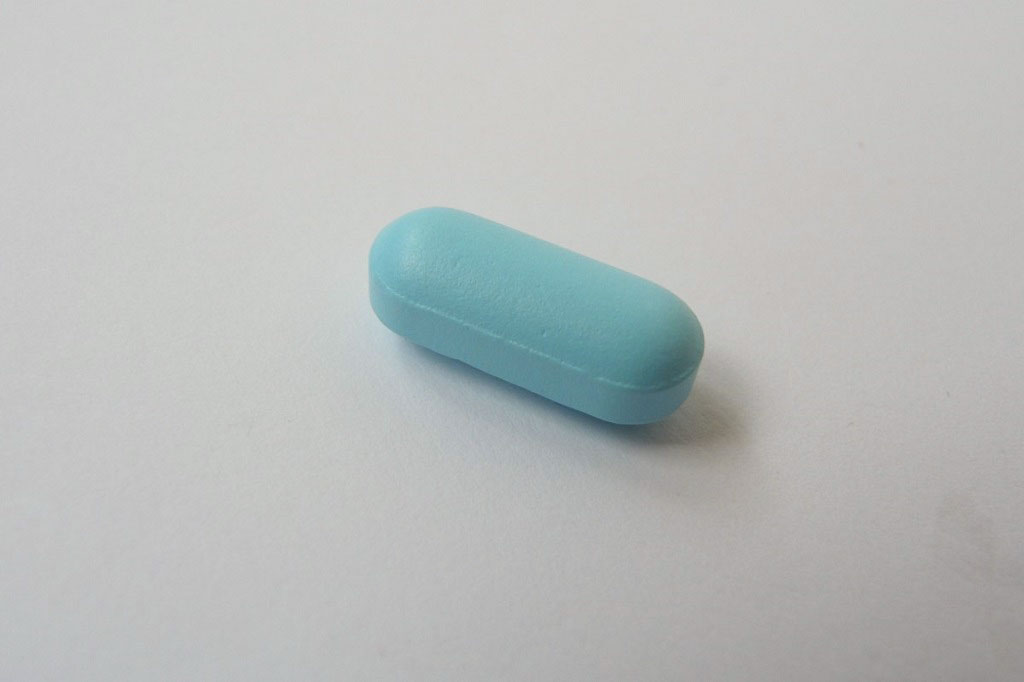Paracetamol: does it cause asthma?
Heart and lungs
News article about a study which looked at paracetamol use in the first year of life the link with asthma at age 6 to 7
“Asthma Calpol Link” is the headline in the Daily Mirror today. Most other newspapers also report on the link, demonstrated in a large study of 100,000 to 200,000 children in over 20 countries. The Mirror says this means that “parents who give sick children paracetamol in Calpol or other products could increase their chances of having asthma”. This is in apparent conflict with the statement from Asthma UK, which advises that “paracetamol use should not be a concern for parents”.
The interpretation of this large international study, the third part of a study called the International Study of Asthma and Allergies in Childhood (ISAAC) programme, is complex. Because of the study’s design, it is not able to prove that paracetamol causes asthma. However, the weight of different types of evidence now points towards a link that needs further investigation. This means that paracetamol use could be at least a “risk factor” for the development of asthma. Further randomised trials and more specific guidance for parents has now been called for. Using the lowest dose necessary, and being careful to stay within the recommended upper limit per day, based on the weight of the child, seems balanced advice for now.
Where did the story come from?
Professor Richard Beasley from the Medical Research Institute of New Zealand in Wellington and others at the Faculty of Medical and Health Sciences in the University of Auckland, New Zealand, with international colleagues from Germany, China, Malta and other parts of the world, carried out this research. The study was funded from a variety of sources, including the BUPA Foundation, the Health Research Council of New Zealand and other research foundations, pharmaceutical companies and the New Zealand Lottery Board. It was published in the peer-reviewed medical journal, The Lancet .
What kind of scientific study was this?
This was a cross-sectional study, which used data from the questionnaires used in the first and third parts of the International Study of Asthma and Allergies in Childhood (ISAAC) programme. This multicentre study was carried out in many countries, looking at two age groups of schoolchildren (6 to 7 year-olds, and 13 to 14 year-old adolescents), chosen from a random sample of schools in the defined geographical areas of the study.
In the first part of the study, parents or guardians of children aged 6 to 7 years were asked to complete written questionnaires about their child’s symptoms of asthma, hay fever and eczema. In the second questionnaire, among other questions about their child’s age, sex, family size and birth order, parents were asked about their exposure to other risk factors. These included antibiotic use in the first year of life, breastfeeding, birth weight, diet, heating and cooking fuels, exercise, pets, socioeconomic status, immigration status, parental tobacco smoke and traffic pollution. The researchers were particularly interested in paracetamol use, and the questionnaire had two questions relating to this. They asked about the use of paracetamol for fever in the child’s first year of life, and the frequency of paracetamol use in the past 12 months (when the children were 6 to 7 years of age). Questionnaires were translated into the local language with answers translated back into English.
The researchers were interested in the rate of asthma symptoms in these children, and they calculated the degree of association using two statistical techniques called logistic regression and multivariate analysis. The socioeconomic status of each centre was calculated based on the country’s gross national income. This, and other factors (covariates), were included in these analyses. The researchers were strict about the data that could be included in the analyses. Centres had to have at least 70% of data available for all the covariates (the other variables that they were measuring), and in their final “multivariate” analysis, children who had a missing value for any of the covariates were removed. This accounts for the different numbers of children and countries in the different analyses.
In all, 226,248 children aged 6 to 7 years from 87 centres in 34 countries participated in the programme, and completed both the questionnaires. Seven centres were excluded for having obtained data for less than 1,000 participants, and seven centres that had a response rate below 60% were also excluded. This left 205,487 children from 73 centres in 31 countries for the first analysis. The analysis of paracetamol use for fever during the first year of life included 194,555 children aged 6 to 7 years from 69 centres in 29 countries. The multivariate analyses included the 105,041 children aged 6 to 7 years from 47 centres in 20 countries who had complete covariate data.
What were the results of the study?
The researchers report that use of paracetamol for fever in the first year of life was associated with an increased risk of asthma symptoms when aged 6 to 7 years. The odds ratio (OR) for this – a measure of the increased risk of asthma for children who took paracetamol compared to those who did not – was 1.46 (an OR of 1.00 would signify no difference between the two groups). The 95% confidence interval quoted was 1.36 to 1.56, suggesting that this was statistically significant and unlikely to have occurred by chance.
Current use of paracetamol was also associated with a significant dose-dependent increased risk of asthma symptoms, with medium use (children who took paracetamol once per year or more) associated with an odds ratio of 1.61 (95% confidence interval of 1.46 to 1.77). High use (children who took paracetamol once per month or more) was associated with an odds ratio of 3.23 (95% confidence interval of 2.91 to3.60) compared with no use.
Paracetamol use, both in the first year of life and in children aged 6 to 7 years, was also associated with an increased risk of symptoms of hay fever and eczema.
What interpretations did the researchers draw from these results?
The researchers conclude that “use of paracetamol in the first year of life, and in later childhood, is associated with risk of asthma, hay fever, and eczema at age 6 to 7 years”. They suggest that exposure to paracetamol might be a risk factor for the development of asthma in childhood. They go on to call for further urgent research, including randomised controlled trials, into the long-term effects of paracetamol to enable production of evidence-based guidelines for the recommended use of paracetamol in childhood.
What does the NHS Knowledge Service make of this study?
This large international study has provided a lot of carefully analysed data. The authors note several strengths to the study which add to the evidence that there could be a causal link between paracetamol and asthma. However, the researchers are careful to note that because of the study’s design, it is not possible to say for certain that paracetamol causes asthma. They list the factors supporting a causal link as:
- The association demonstrated is strong. There was a three-fold increase for high users of paracetamol, and this was consistent across two time points.
- The dose-response relationship. Increased use of paracetamol was linked with increased rates of asthma.
- The link has been consistent across different cultures, different health systems and, in other studies quoted by these authors, in other age groups.
- Other studies have shown that increased use of paracetamol over the years is associated with an increased prevalence of asthma in many countries, and although such “temporal associations” may not provide strong evidence on their own, they do add to the overall, developing picture.
- The authors suggest an underlying biological mechanism, as yet unproven, based on the depletion of the protein glutathione, which may explain how paracetamol affects asthma.
Limitations to the study and possible areas of bias discussed by the authors include the following:
- An understanding of the timing (age of onset for asthma) is critical to the interpretation of this study. For causation to be proven, the use of paracetamol must come before the onset of asthma. As this is a cross-sectional study, it is not possible to show this.
- Reverse causality, however, may be a problem if another, separate factor is linked with asthma and paracetamol use. For example, the authors mention that the respiratory syncytial virus (RSV) and infection is known to be linked with wheezing at aged 6 years, and paracetamol may be used to treat such infections. Therefore, wheeze from this virus could be preceding the exposure to paracetamol. However, the authors argue that wheezing in the first year of life is not a reliable predictor of asthma in later life, therefore treating respiratory infections with paracetamol may not be a valid explanation for reverse causality. The authors address this limitation (also called “indication bias”) in detail. They argue that this is unlikely to be an important cause of bias.
- “Recall bias” may have been introduced by the fact that the study relied on questionnaires given to the parents when the child was aged 6 to 7 years. This could mean that if the parents of the children with asthma remembered the amount of paracetamol used more accurately than the parents of children without asthma, the total paracetamol taken in the first group would have been larger and led to false results. There was no evidence that this happened, though it remains a possibility with this type of study design. It is more likely that both sets of parents remembered how much paracetamol was used equally well, or badly.
- A further potential source of error particular to this study is the fact that the questionnaires were administered in several different languages. However, this is unlikely to have affected the results.
- The 85% response rate to the questionnaire (average across all centres) is high for this sort of study, and is unlikely to be a source of error.
Although it is true to say that this cross-sectional study cannot prove causation on its own, the link and other arguments presented by these researchers suggest that the observational evidence for paracetamol as a risk factor is strong, perhaps strong enough to support their call for urgent research by randomised controlled trials.
Sir Muir Gray adds...
All medicines can do harm as well as good; use as little as possible for as short a time as possible.






 Subscribe
Subscribe Ask the doctor
Ask the doctor Rate this article
Rate this article Find products
Find products








